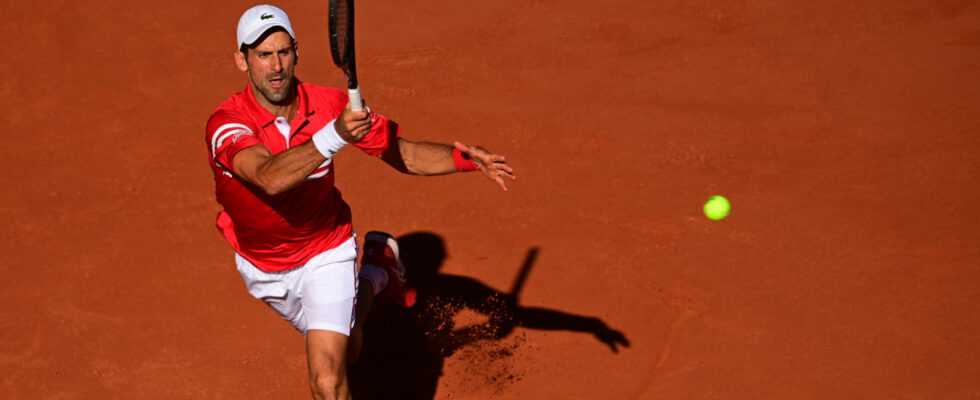They are often referred to by numbers or abbreviations in the tables. Seeds, qualifiers (Q), wildcards (WC) and lucky losers (LL) are some of the key terms in tennis tournaments, and Roland-Garros is no exception to the rule. These precise words designate the particular status of a registered player. Other players are also allowed to participate in the event through their protected ranking. Europe 1 details these specific terms that curious people and tennis lovers hear every year at Roland-Garros.
How are the seeds named?
The 32 highest ranked players have a significant advantage: they are “seeded”, that is to say they cannot compete in the first rounds of the tournament. Their name is followed by a number in the tables, and at Roland-Garros, their hierarchy is determined solely by their world ranking. This is why logically the world number one Novak Djokovic will have number 1.
At the time of the draw, these participants are therefore protected. The first four seeds are each placed in one of the four draw parts so that they cannot meet before the semi-finals. The first two are on one side and on the other to be able to face each other only in the final. For example, Rafael Nadal and Roger Federer fought for the title several times at Porte d’Auteuil when they benefited from the first two seeds.
Of the 128 participants, 32 have this status. The table is made up so that no meeting between the top seeds takes place before the third round. These players therefore face lower-ranked opponents during the first days of the tournament.
Who are the “qualified” for Roland-Garros?
To have the privilege of integrating the big tables, some players must fight during the qualifying week which opened on Monday. These are those who are ranked outside the top 100. If successful, they become the “qualified” for Roland-Garros, designated by the letter Q next to their name.
At the end of these qualifications, 16 players and 16 players win the right to play in the main tournament. But unlike the top seeds, they are not protected in the big draws and can meet the best ranked in the first round. Despite everything, some have shone in the past in the Parisian Grand Slam, like Argentina’s Nadia Podoroska who reached the semi-finals of women’s singles in 2020.
The lucky losers, “happy losers” drafted by the organizers
Among those eliminated from qualifying, some players may have the chance to be drafted by the organizers of Roland-Garros. These are the “lucky losers”. At the end of the week, the management draws up the list of the “best losers” of the matches of the third qualifying round, based on the ATP and WTA rankings. These players must initial an attendance sheet on the days of the first round of the main draw to signify that they are ready to play in the event of a forfeit.
These defections have sometimes been numerous: no less than eight for example during the 2018 edition. That year, the Argentinian Marco Trungelliti, 190th in the world and eliminated in the third qualifying round, had to make a trip disaster to replace an absent player, and he had even won his first round!
Invited players who benefit from a “wild-card”
Other players earn the right to participate thanks to invitations from the organizers, whether for the qualifications or for the big draws. These are wild cards, abbreviated as WC. Each main draw has eight. Among these invitations, six come from the French Tennis Federation (FFT) and the other two are awarded by the Australian (Tennis Australia) and American (USTA) federations as part of an agreement, recalls the official Roland-Garros website. .
The names of the players “invited” by management are already known. The FFT regularly chooses promising young French people, winners of challengers tournaments or figures on the circuit who do not have a sufficiently high world ranking to directly integrate the big picture. This is particularly the case for Gilles Simon (160th in the world) and Jo-Wilfried Tsonga (263rd), who have announced that they will be playing their last edition of Roland-Garros. As for the ladies, Fiona Ferro (139th) or Chloé Paquet (101st) also benefit from an invitation.
It may happen that a player invited by the organizers achieves a great performance. This was the case of young Hugo Gaston, who had reached the round of 16 of the tournament during the 2020 edition, the best tricolor performance that year.
The protected classification, for players returning from a long absence
It is the last status which allows to grant a place in the main draw without going through the qualifications. The protected ranking is awarded to previously well-ranked players who have had to put their careers on hold. In the majority of cases, the cause is a long injury, which causes them to drop irretrievably in the standings. This year, the French Jérémy Chardy or the American Sofia Kenin, finalist of the 2020 edition, make their “protected classification” speak to integrate the table.
In some cases, the reason is not necessarily a long injury. The German Tatjana Maria is thus the beneficiary of this status after giving birth to her second child in April 2021.
